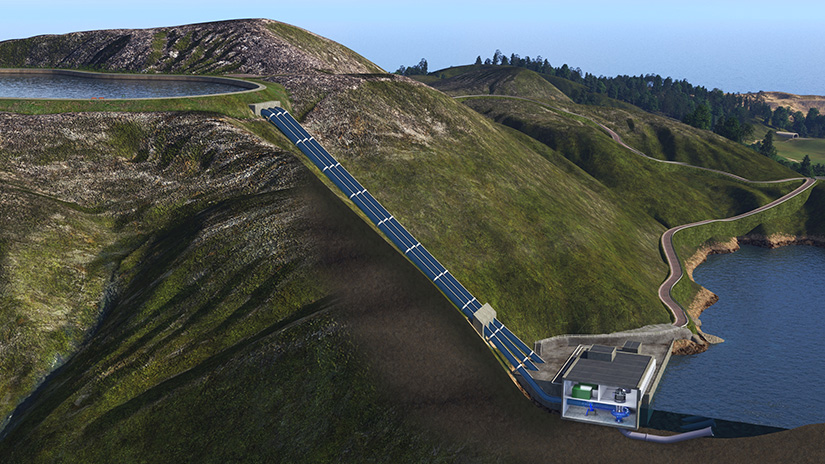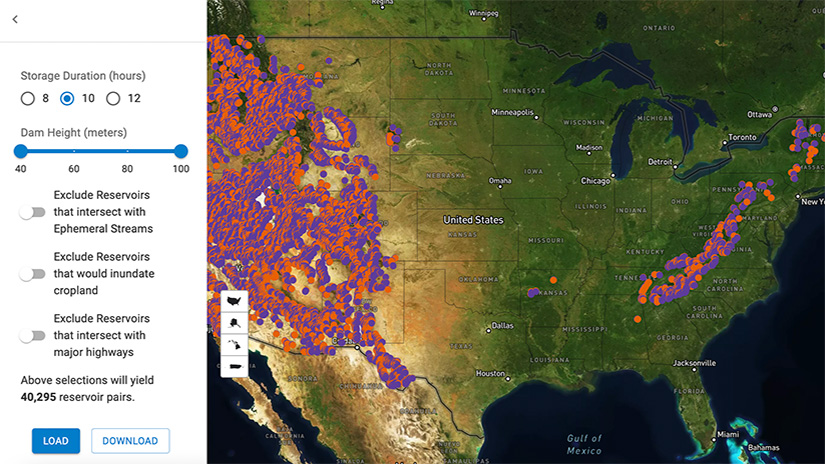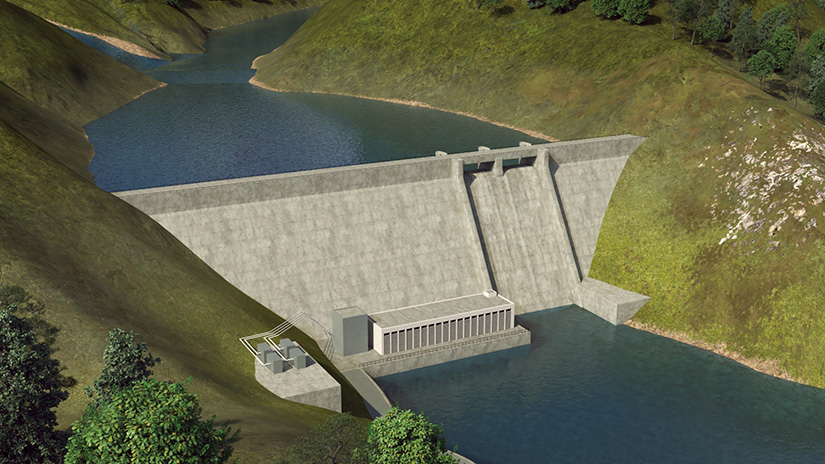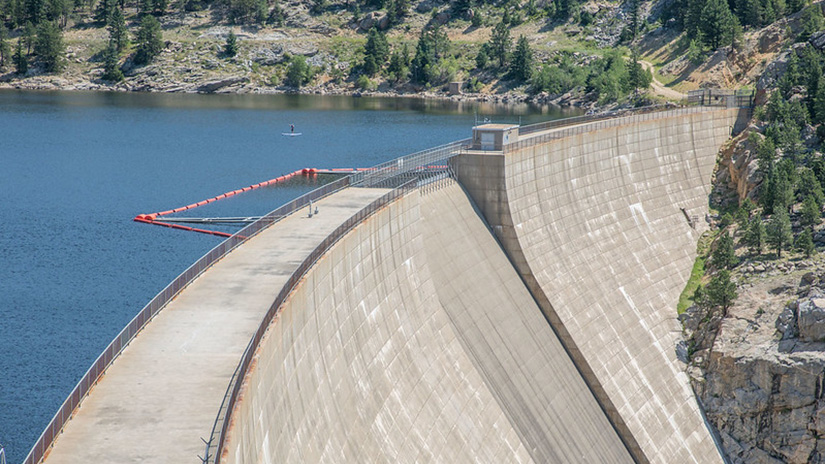Unlocking Hydropower's Potential
Renewable Energy Discovery Island Demonstrates Water Power Technologies at the Heart of NREL Research
In 1880, a water-powered turbine generated its first spark of electricity. It powered a theater and storefront in Grand Rapids, Michigan. By 1893, the first commercial hydropower plant was operating in Redlands, California. And according to the U.S. Department of Energy (DOE), in 2022, hydropower accounted for more than 28% of all renewable electricity generation in the United States.
Needless to say, hydropower is not new. In fact, hydropower’s consistency, flexibility, and dispatchability (more on that later) have already made it essential to the grid—and to our clean energy transition.
The virtual Renewable Energy Discovery (REDi) Island, an educational resource developed by the National Renewable Energy Laboratory’s (NREL's) water power team and design agency IKM 3D and funded by DOE’s Water Power Technologies Office (WPTO), showcases all types of marine energy and hydropower technologies in action—technologies that are being developed and refined right here at NREL.
Researchers at NREL are working to optimize hydropower operations and studying where best to situate new hydropower projects, how to minimize environmental impacts, and how to best understand hydropower’s role in the future grid.
“REDi Island helps simplify complex hydropower technologies,” said Jennifer Daw, a senior water power researcher at NREL. “It helps users understand the role these technologies play today and their potential to continue to support the grid in the future.”
Dive into a few of REDi Island’s waystations to get a clearer picture of the research NREL is leading on these hydropower technologies—and to investigate the diverse career pathways that hydropower has to offer.
Charting a Path for New Pumped Storage Hydropower

REDi Island demonstrates how pumped storage hydropower generates energy by sending water downhill, through a turbine, to a lower reservoir. The water is then pumped back uphill and stored for later use. Illustration from IKM 3D
A big area of hydropower research at NREL involves pumped storage hydropower (PSH) systems, like the one seen in REDi Island’s Hydro Heights. PSH currently provides 93% of the United States’ grid-scale energy storage. The systems spring into action when energy is needed on the grid by dispatching water from a reservoir at higher elevation to one at lower elevation through a series of pipes—turning electricity-generating turbines along the way. When there is low energy demand on the grid, excess power is used to pump water back to the upper reservoir for later use.
Because of its unique ability to produce energy on demand, PSH could be a key player in a clean energy grid, providing energy storage that can help to integrate additional renewable resources, such as wind and solar, with the power system. But developing a new PSH system is a substantial investment that requires certain geographic features to create the upper and lower reservoirs and a design that can maximize energy storage with minimal environmental impact.
A new interactive map created by NREL researchers makes it easy for developers and other decision makers to explore potential PSH sites.

This interactive map developed by NREL allows users to explore potential pumped storage hydropower sites across the United States, selecting for variables such as cost, energy storage capacity, and environmental impact.
This tool incorporates not just environmental criteria but also technical details, such as desired energy output or local policy related to renewable energy deployment.
“The intention of the tool is to explicitly identify sites that have less environmental impact and lower costs,” said Stuart Cohen, a senior modeling engineer on NREL’s water power team who helped develop the tool.
The simplicity of the tool makes it useful for “anyone who’s interested in understanding PSH and how it can fit into the grid,” Cohen said. “If a developer is trying to make a case for a site, and the decision maker doesn’t have the expertise, they can look at the tool.” (A recent webinar led by Cohen demonstrates the tool’s capabilities.)

The Hydro Hollow stop on REDi Island shows how conventional dams work within a run of river to produce power when needed on the grid. Illustration from IKM 3D
Maximizing the Potential of Existing Hydropower
From the giant Hoover Dam to smaller hydropower plants across the country, conventional hydropower has been providing electricity to the grid for more than a century. On REDi Island, Hydro Hollow demonstrates how conventional hydropower releases water on demand when energy is needed on the grid, relying on the elevation difference created by a dam or diversion structure and a steady flow of water upstream. Water flows in one side and exits at a lower point, spinning a turbine to produce electricity for the grid.
In a 2022 report, "Advanced Hydropower and PSH Capacity Expansion Modeling," Cohen and fellow NREL researcher Matthew Mowers investigated, among other things, the true potential of both PSH and conventional hydropower when they are operated with the most flexibility. Hydropower “flexibility” refers to a facility’s ability to ramp power production up or down based on the needs of the grid—after considering other constraints such as water flow requirements, recreational use, and other draws on the body of water that normally take priority over power production.
“There is potential for flexible hydropower to contribute more to the grid than it does today,” Cohen said, adding that the report was meant to serve as motivation for hydropower plant owners to examine ways to make their facilities more flexible. “The point of the report was to demonstrate that if hydropower owners could gain even a little more flexibility in their operations, they could see some significant benefits.” These benefits could mean big gains for the grid, especially as many new domestic PSH and conventional operations are still some years away from being developed.
Optimizing this flexibility was one of the key goals of the American-Made Hydropower Operations Optimization (H2Os) Prize, which challenged competitors to create sophisticated solutions for estimating hydropower availability and crafting best water-management practices.
The prize, which is administered by NREL and funded by WPTO, will culminate in an in-person competition at the National Hydropower Association’s Clean Currents Conference in Cincinnati, Ohio, this October. Teams will not only compete for a share of an $85,000 prize pool but also be able to share their strategies with utilities and grid operators attending the conference.

NREL researchers are looking at ways to amplify the energy potential of existing conventional dams across the country. Photo from Brent Olson, WPTO’s Make a Splash Contest
Coming Soon to REDi Island
REDi Island will eventually encompass 15 different waystations (like Hydro Heights and Hydro Hollow) that explain and demonstrate different types of hydropower and marine energy technologies. Also on the horizon: an interactive app, ideal for the classroom, that allows users to virtually hop from one waystation on the island to another to quickly learn more about each technology.
REDi Island is just one part of NREL's and WPTO’s water power outreach and education efforts designed to raise the profile of hydropower, demonstrate ways the laboratory is working to optimize it, and encourage future generations to explore a career in renewable energy. Through these activities, NREL and WPTO hope to ensure that the future of hydropower and marine energy remains robust and sustainable.
Learn more about science, technology, engineering, and mathematics (STEM) careers and workforce development opportunities in hydropower. And stay up to date on other exciting research by subscribing to NREL's water power newsletter, The Current.
Last Updated May 28, 2025
